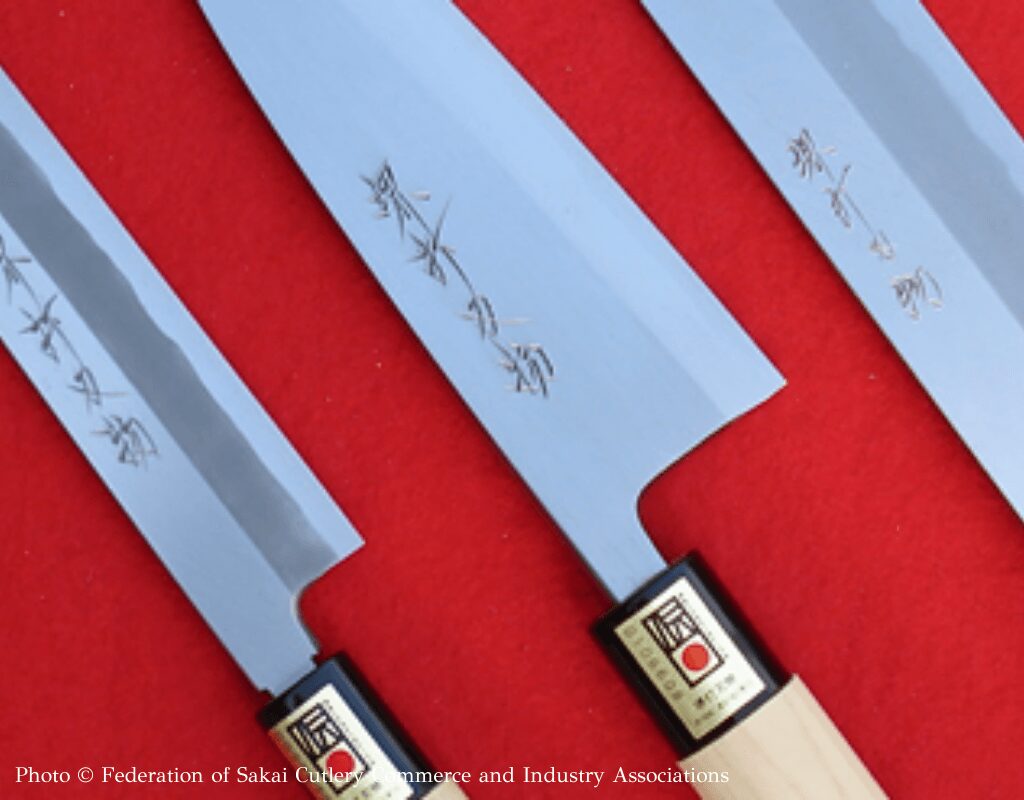Sakai, Japan, is renowned for its masterful knife-making heritage. With centuries of experience in crafting world-class blades, Sakai has become synonymous with precision and quality in the art of Japanese knives. From ancient techniques passed down through generations to modern innovations, Sakai knives showcase a dedication to craftsmanship that attracts chefs and knife enthusiasts from around the globe. This guide explores the fascinating history of Sakai knives, the unique techniques behind their creation, and where to find these exceptional tools to enhance any culinary journey.
If you’re interested in exploring other hidden gem in Japan, please take a look below.
Table of Contents
Chapter 1: Origins and Early History
Sakai knives have a history going back around 2,000 years. Sakai, home to Japan’s largest ancient burial mound, Nintoku-ryo Kofun, became an important hub for construction in early Japan. Without cranes or cement, workers needed skilled artisans to make tools like spades and hoes, and many settled in Sakai for this purpose.
In 1543, Portuguese traders introduced firearms and tobacco to Japan. Sakai’s craftsmen played a vital role in producing tools for these new industries, using their knife-making expertise. By 1573, they began making specialized knives to cut tobacco leaves, sharpening their techniques even further. This early craftsmanship laid the foundation for the high-quality Sakai knives known today.
Source: Federation of Sakai Cutlery Commerce and Industry Associations
Chapter 2: Modern History
Sakai knives have transformed into tools cherished by chefs worldwide. Their sharpness and precision satisfy even the highest standards of culinary professionals. In 1982, the Ministry of Economy, Trade, and Industry designated Sakai Uchihamono (Sakai forged knives) as a traditional craft. When you see Sakai knives, you’ll notice a mark resembling the Japanese flag. This traditional symbol signifies the knife’s designation as a traditional craft, affirming its exceptional craftsmanship and handmade quality.
Source: SAKAI DENSHOKAN

Chapter 3: The Secret to High Quality
The exceptional quality of Sakai knives lies in a unique division of labor, where each part of the knife is crafted by specialized artisans. This focus on expertise and careful, dedicated time results in a blade with world-class sharpness.
- Forging: The blacksmith heats the blade metal in a furnace and hammers it repeatedly, shaping the blade and creating its core structure.
- Sharpening: Using whetstones, the sharpener grinds and polishes the blade to achieve a razor-sharp edge.
- Handle Making: Another artisan selects durable wood and crafts the handle for a sturdy grip.
- Assembly: The final step is attaching the blade to the handle, completing the knife.
Of course, actual process is even more complex, with each step crafted by artisans who have spent decades mastering skills honed over centuries of tradition.

Chapter 4: Where to Find the Sakai Knives?
Sakai Denshokan / 堺伝匠館
Located about a 15-minute walk from Sakai Station, Sakai Denshokan is famous among professional chefs worldwide who come specifically to purchase a Sakai knife. The center offers explanations in English and French, guiding visitors through the selection process and teaching them about the craftsmanship and history behind these knives. Since a Sakai knife can be a lifelong companion, it’s worth visiting Sakai to find the perfect one.
- Address: 1-1-30 Zaimokucho Nishi, Sakai-ku, Sakai City, 590-0941
- Official Site: Available in English

Jikko / 實光刃物
Established in 1900, Jikko is a specialty knife store with its main shop in Sakai and a dedicated knife store in Tokyo’s Kappabashi district, opened in 2021. With around 140 knives displayed in its Tokyo location, Jikko is an excellent option for those looking to explore Sakai knives in the capital.
- Address: 1-9-10 Matsugaya, Taito-ku, Tokyo 1F / 2F Matex No. 2 Building, 111-0036
- Official Site: Available in English



